All Images
News Release 05-014
NSF Submits Its Fiscal 2006 Budget Request of $5.6 Billion
Even in a tight budget climate, director sees opportunities to enable scientific growth
This material is available primarily for archival purposes. Telephone numbers or other contact information may be out of date; please see current contact information at media contacts.
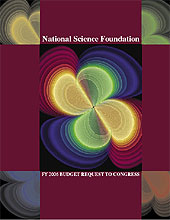
NSF FY 2006 Budget Request to Congress
About the cover image:
Gravitational Waves from In-Spiraling Black Holes. This simulation of orbiting black holes was created on the Itanium Linux Cluster supercomputer at the National Center for Supercomputing Applications (NCSA) at the University of Illinois, Champaign-Urbana. The ripples shown are known as gravitational waves, which result from the merging of two back holes. NCSA, which receives support from the National Science Foundation, has an international reputation in high performance computing and networking and in developing innovative software applications.
Credit: Ed Seidel, LSU; Max Planck Institute for Gravitational Physics (Albert Einstein Institute); visualization by Werner Benger, Zuse Institute Berlin
Download the high-resolution JPG version of the image. (71 KB)
Use your mouse to right-click (Mac users may need to Ctrl-click) the link above and choose the option that will save the file or target to your computer.
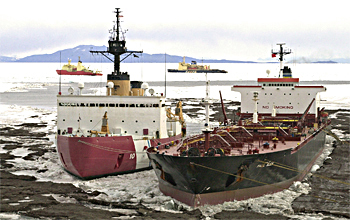
The U.S. Coast Guard icebreaker Polar Star (left) and the Navy tanker USNS Paul Buck at the ice pier at McMurdo Station, NSF's logistics hub in Antarctica. In the background are the Russian icebreaker Krasin (center), which assisted the Polar Star this year in breaking a channel through McMurdo Sound, and the NSF research vessel Nathaniel B. Palmer.
Credit: Brien Barnett
Download the high-resolution JPG version of the image. (1.7 MB)
Use your mouse to right-click (Mac users may need to Ctrl-click) the link above and choose the option that will save the file or target to your computer.
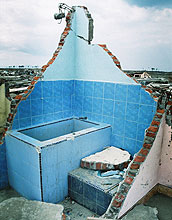
The bathroom of a brick home in Sumatra partially survived the tsunami.
Credit: © Jose C. Borrero, University of Southern California Tsunami Research Group
Download the high-resolution JPG version of the image. (644 KB)
Use your mouse to right-click (Mac users may need to Ctrl-click) the link above and choose the option that will save the file or target to your computer.
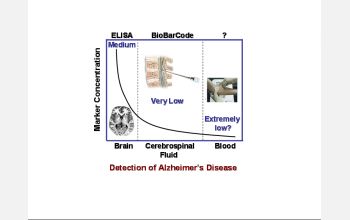
The bio-bar-code amplification technology, which is a million times more sensitive than enzyme-linked immunoassay (ELISA) tests, can detect ADDLs in cerebrospinal fluid where the biomarker is present in very low concentrations. The goal is to ultimately detect and validate the marker in blood.
Credit: Northwestern University
Download the high-resolution TIF version of the image. (113 KB)
Use your mouse to right-click (Mac users may need to Ctrl-click) the link above and choose the option that will save the file or target to your computer.
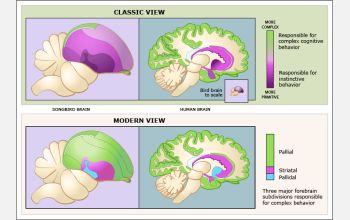
A wide range of studies have recently demonstrated that the so-called "primitive" regions of avian brains are actually sophisticated processing regions homologous to those in mammals. The above illustrations compare the traditional view of the primitive avian brain as a subregion of the human brain (in purple) with the new view that the avian brain has subregions proportional to those in humans (blue, purple and green). Scientists now know that the complexities of avian brain regions allow sensory processing, motor control and sensorimotor learning as in the mammalian neocortex (in green).
Credit: Zina Deretsky, National Science Foundation
Download the high-resolution JPG version of the image. (93 KB)
Use your mouse to right-click (Mac users may need to Ctrl-click) the link above and choose the option that will save the file or target to your computer.


